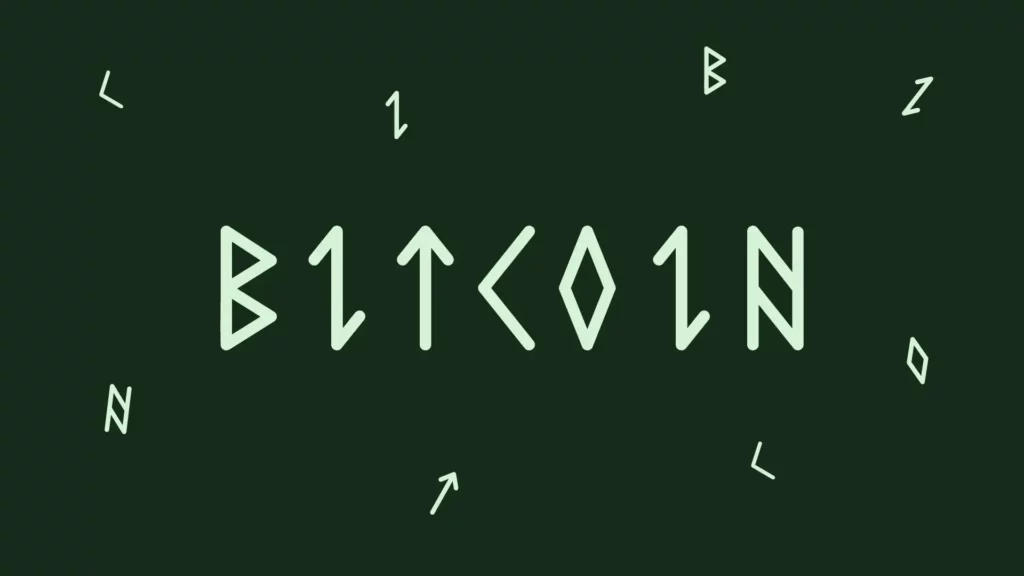Bitcoin Runes: The Innovative BRC-20 Token Alternative, Explained

Bitcoin Runes: The Innovative BRC-20 Token Alternative, Explained.
Key Takeaways
- Runes Protocol enhances efficiency by utilizing Bitcoin’s UTXO mechanism, minimizing network congestion and reducing blockchain bloat.
- Runes Protocol enables the creation of various tokens, including memecoins, stablecoins, security tokens, and governance tokens.
- With simplified token creation processes and resources, Runes Protocol encourages developer participation.
- To create or mint tokens with Runes, install the Ordinals software, run a Bitcoin Core node, and familiarize yourself with the protocol on the test network.
What Is The Runes Protocol On Bitcoin?
The Runes protocol is upending the status quo on cryptocurrency. It allows the generation of fungible tokens (such as memecoins) directly on the Bitcoin blockchain.
It is focused on interchangeable tokens, in contrast to Bitcoin’s Ordinals protocol for NFTs. This is revolutionary since it was previously difficult and ineffective to create these kinds of tokens on Bitcoin.
Bitcoin saw its fourth halving at block 840,000 on April 19th, 2024, ushering in a new era. The fact that this event lowers the incentives miners get for validating blockchain blocks makes it noteworthy.
Excitingly, this coincides with the launch of the Runes Protocol, bringing the potential to create fungible tokens directly on the Bitcoin network.
How Does The Runes Protocol Work?
Runes use OP_RETURN instructions and the existing UTXO system of Bitcoin to function. Consider UTXOs as discrete coins that are assembled into transactions. Runes represents token information with these “coins” and little data packets inside transactions. This simplified method seeks to prevent slowing down the network.
Similar to smart contract systems like Ethereum, Runes have the potential to expand the potential applications of Bitcoin. Just think of memecoins, stablecoins, and even governance tokens residing on the Bitcoin blockchain!
This might broaden the appeal of Bitcoin by drawing in new users, developers, and initiatives. The effect on network congestion and transaction fees, however, is still under debate.
Who Created The Runes Protocol?
Casey Rodarmor, the developer behind the well-known Ordinals protocol (for NFTs) on Bitcoin, invented the Runes protocol.
By offering a set of guidelines and resources, Runes seeks to ease the process of creating and managing fungible tokens, therefore easing congestion on the Bitcoin network.
What Can You Do With Runes?
With the launch of the Runes protocol on Bitcoin, memecoins and tokens that represent different communities on Bitcoin may proliferate due to their simplicity of creation.
Furthermore, projects can issue many kinds of fungible tokens, such as:
- Security tokens: Signifying possession of property.
- Stablecoins: Pegged to the value of other currencies, such as the US dollar.
- Governance tokens: Providing the ability to vote in decentralized initiatives.
How To Buy Runes Crypto?
Although the Runes protocol allows others to create tokens on the Bitcoin blockchain, a specific “Runes” cryptocurrency token may itself not exist. It’s crucial to remember that this is not to be confused with the popular THORChain project and its native cryptocurrency, RUNE.
However, the individual tokens created on the Bitcoin blockchain can be bought, rather than a single “Runes” cryptocurrency. One can purchase Runes on Magic Eden; the Runes wallet from Xverse, which can be used to store Runes and quickly connect to the marketplace and access Runes-themed NFTs.
Collections like SATOSHI•NAKAMOTO, DOG•GO•TO•THE•MOON, MEME•ECONOMICS, and RSIC•GENESIS•RUNE are among the pioneering Bitcoin NFTs based on the Ordinals protocol and featuring Rune-inspired designs.
Etching And Minting In The Runes World
“Etching” is the process of creating a new fungible token using the Runes Protocol, whereas “minting” is the process of adding more tokens to an already existing supply.
To use Runes (which operates inside the Ordinals framework,, you must install software for Ordinals and run a Bitcoin Core node. Ensure to first hone your skills on the test network!
Runes Protocol Vs. BRC-20: Understanding The Differences
Runes leverages the underlying UTXO mechanism of Bitcoin to prioritize efficiency. It seeks to encourage conscientious token production and reduce blockchain bloat. Conversely, BRC-20 relies on Ordinal Theory, a less efficient method that can cause network congestion.
| Feature | Runes Protocol | BRC-20 |
| Design | UTXO-based | Relies on Ordinal Theory |
| Efficiency | Less network congestion | Prone to UTXO bloat |
| Ease of development | Simpler | More complex |
| Token management | Potential for greater responsibility | Less structured |
Is It Safe To Buy Runes?
Similar to most cryptocurrency investments, purchasing tokens generated on the Runes network entails risk. It is imperative to conduct in-depth study on particular initiatives, focusing on the team, goals, and community trust.
Purchasing Runes-based tokens is a decision tied to each investor’s personal financial goals. Moreover, don’t forget that cryptocurrency markets can be unstable. New tokens may be less liquid and subject to extreme price fluctuations.
In addition, the Runes protocol is still in its infancy. It’s unclear how it will affect the Bitcoin network in the long run. Recognize the risks before investing in any Runes-based coin, and never risk more than you can afford to lose.
Conclusion
In the world of cryptocurrencies, the Runes Protocol is a game-changer since it provides a simple method for producing fungible tokens right on the Bitcoin network. This system, led by developer Casey Rodarmor, has the ability to reduce network congestion and open up a wide range of opportunities, including memecoins and security tokens.
With its fourth halving, Bitcoin is about to enter a new era, and the Runes Protocol adds an exciting new layer of innovation. The Runes Protocol surely represents a crucial advancement in the development of decentralized finance on the Bitcoin network, even though the consequences for the future are still being worked out.
FAQs